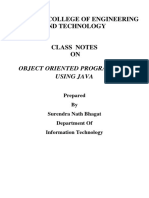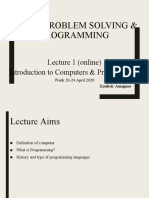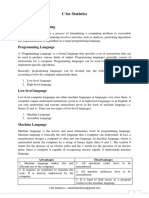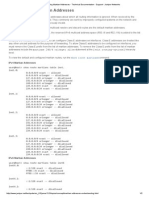0% found this document useful (0 votes)
8 views2 pagesExplaination of Classification of Progrraming Language
The document explains programming languages, categorizing them into three types: machine level, assembly level, and high-level languages. Machine level language is the lowest and difficult for humans to understand, while assembly language is a middle-level language that is more human-readable but machine-dependent. High-level languages are user-friendly and easier to write and debug, but they require compilers and interpreters for conversion and take longer to execute.
Uploaded by
fajaci6496Copyright
© © All Rights Reserved
We take content rights seriously. If you suspect this is your content, claim it here.
Available Formats
Download as PDF, TXT or read online on Scribd
0% found this document useful (0 votes)
8 views2 pagesExplaination of Classification of Progrraming Language
The document explains programming languages, categorizing them into three types: machine level, assembly level, and high-level languages. Machine level language is the lowest and difficult for humans to understand, while assembly language is a middle-level language that is more human-readable but machine-dependent. High-level languages are user-friendly and easier to write and debug, but they require compilers and interpreters for conversion and take longer to execute.
Uploaded by
fajaci6496Copyright
© © All Rights Reserved
We take content rights seriously. If you suspect this is your content, claim it here.
Available Formats
Download as PDF, TXT or read online on Scribd
/ 2























































































